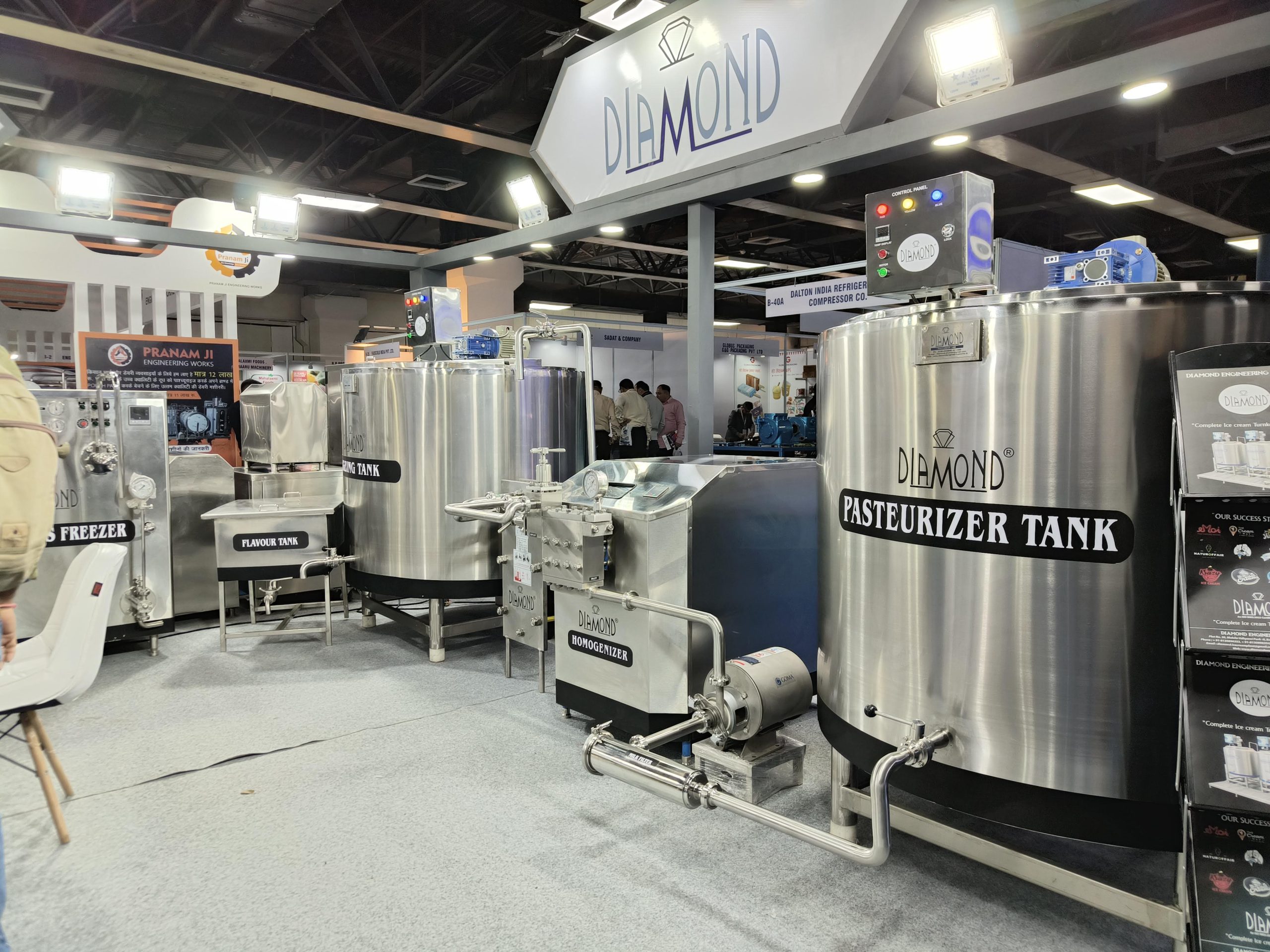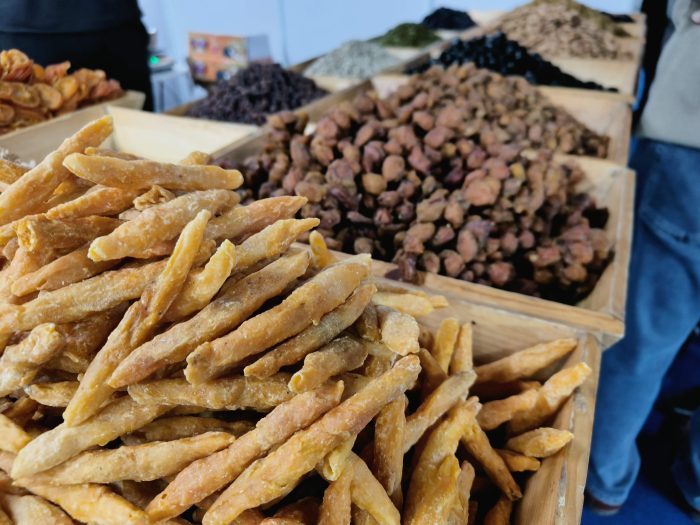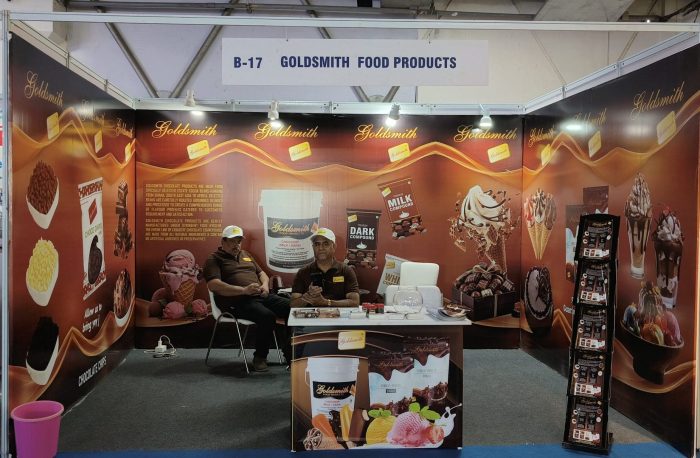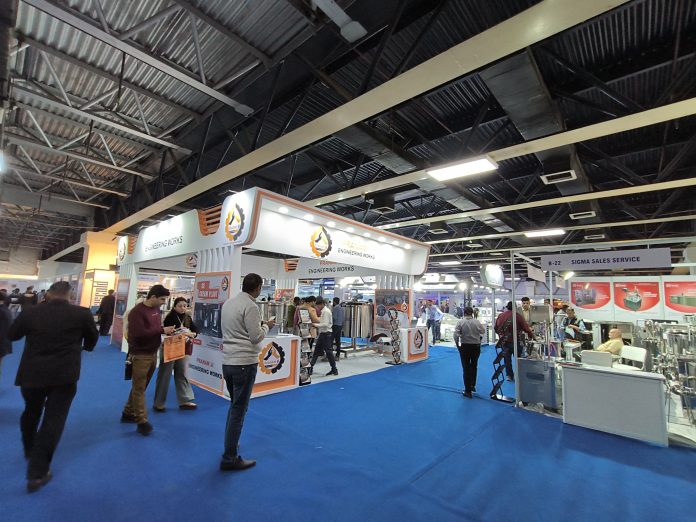At the maiden World of Ice Cream exhibition organized at International Trade Expo Centre, Noida, from 6-9 March, IndiFoodBev’s team got an opportunity to meet and learn about the processes and technology involved in the making of ice cream. The event brought together a wide range of solution providers in ice cream production under one roof.
The name World of Ice Cream might lead one to imagine something from the movie, Charlie and the Chocolate Factory. Upon entering, IndiFoodBev discovered that there’s not one Willy Wonka here, but several. Rectifying that mental image, we told ourselves that it was an exhibition of the ice cream industry, not just ice cream.

For several participants, the exhibition became a point of recognition of the ice cream industry’s growth. The list of attendees included ice cream makers, machinery manufacturers, cold chain solution providers, packaging providers, and makers of wafer cones, chocolates, and ice cream toppings. And there was a lot to learn about the process of making the sweet dessert.
Machine providers Sigma Sales, Anand, Diamond Engineering Works, and Pranam ji Engineering Works, ice cream makers Kathiyawada and Vadilal, and Tata Voltas, a cold chain specialist, were among the leading names.
The first step in making ice cream involves mixing the main ingredients such as milk, cream, sugar, stabilizers, emulsifiers, flavorings, and any additional ingredients such as fruits, nuts, or chocolate chips. The mixture is usually heated to dissolve the sugar and any other solid ingredients. After mixing, the liquid mixture undergoes pasteurization to kill any harmful bacteria present in the ingredients by it to a specific temperature for a set period, then quickly cooling it down.

The mixture, after pasteurization, is then homogenized to break down the fat molecules into smaller, more uniform sizes. This helps create a smoother texture in the finished ice cream. Some manufacturers choose to let the mixture age for several hours or overnight — allowing the flavors to blend better. The mixture is cooled and then frozen in a batch freezer or continuous freezer. During this process, air is incorporated into the mixture to give the ice cream its light, airy texture.
“If the ice cream contains any additional ingredients such as chocolate chips, nuts, or fruit pieces, they are added during or after the freezing process,” said Anand Kumar, area sales manager, Goldsmith food products, a chocolate provider. “One of the fun aspects of making ice cream is experimenting with different flavors and mix-ins. Consumers enjoy if there’s something new to try in the market. Innovation is something the ice cream manufacturing industry constantly focuses upon.”
Once the ice cream is frozen to the desired consistency, it is transferred to packaging containers. These containers can vary in size and shape, from pints and quarts for retail sale to larger containers for food service or industrial use. Some ice cream may go through a hardening process, where it is stored at very low temperatures to achieve a firmer texture before distribution.

According to a representative from Vadilal, “The packaged ice cream is stored in freezers at the manufacturing facility or distribution centers before being shipped to retailers or customers. Throughout the manufacturing process, quality control measures are taken to ensure that the ice cream meets certain standards for flavor, texture, and safety.”
There are also no-churn methods that do not require an ice cream maker. These typically involve mixing whipped cream with condensed milk and flavorings, then freezing until ready to eat. While churned ice cream has better taste and texture, no-churn ice cream can be done easily at home. Contrary to YouTube DIYs, making ice cream does require some time and patience as there are several steps involved, including chilling the mixture, churning it, and freezing it until it is firm enough to consume.
IndiFoodBev — authentic, impactful and influential
An English-language food and beverage processing and packaging industry B2B platform in print and web, IndiFoodBev is in its third year of publication. It is said that the Indian food and beverage industries represent approximately US$ 900 billion in revenues which implies more than 20% of the country’s GDP. Eliminating the wastage on the farmside can help to deliver more protein to a higher number of the population apart from generating sizable exports. The savings in soil, seeds, water, fertilizer, energy and ultimately food and nutrition could be the most immense contribution that country is poised to make to the moderation of climate change.
To improve your marketing and grow sales to the food and beverage processing and packaging industry, talk to us. Our research and consulting company IppStar [www.ippstar.org] can assess your potential and addressable markets in light of the competition. We can discuss marketing, communication, and sales strategies for market entry and growth.
Suppliers and service providers with a strategy and budget for targeted marketing can discuss using our hybrid print, web, video, and social media channels to create brand recognition linked to market relevance. Our technical writers are ready to meet you and your customers for content.
The second largest producer of fruit and vegetables in the world is continuously expanding processing capacities and delivery systems with appropriate innovative technologies. We cover product and consumer trends, nutrition, processing, research, equipment and packaging from farm to thali. Get our 2025 media kit and recalibrate your role in this dynamic market. Enhance your visibility and relevance to existing markets and turn potential customers into conversations. Ask for a sample copy of our bi-monthly in print or our weekly IndiFoodBev eZine each Wednesday.
For editorial info@ippgroup.in — for advertisement ads1@ippgroup.in and for subscriptions subscription@ippgroup.in
Naresh Khanna – 10 February 2025
Subscribe Now











